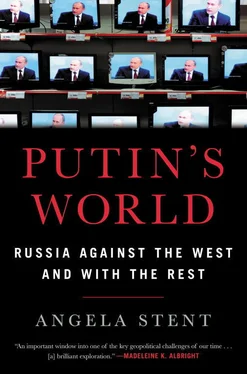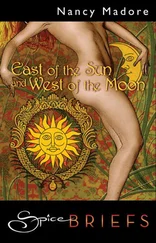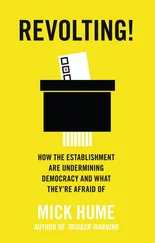His audience sat in stunned silence and then offered scattered and restrained applause. Putin had thrown down the gauntlet and put the United States on notice that there could be no more business as usual as Washington defined it. But newly appointed US defense secretary Robert Gates, a veteran of the CIA, chose not to respond in kind. Saying “One Cold War was quite enough,” he added he would travel to Russia soon because “Russia is a partner in [our] endeavors.” 6The White House described Russia as a “valued ally.” The Bush administration, knowing that Putin had only one year left in office, preferred to believe that the speech was domestically oriented in the lead-up to a presidential succession.
Although the Munich speech was indeed partly designed to appeal to Putin’s supporters at home, in retrospect it marked the beginning of a new phase in Russia’s relations with the West—and particularly with the United States. After seven years of rising oil prices and growth rates of 7 percent per annum, Putin felt emboldened to deliver a strong message: Russia was no longer willing to accept an agenda set by the United States. Instead of showing respect, so the Kremlin felt, the United States had taken a series of steps inimical to Russia’s interests, including expanding NATO, invading Iraq, supporting color revolutions in Russia’s backyard—and constantly criticizing Russia for its democratic deficits. Russia had had enough.
Why have US-Russia relations gone so badly wrong, given that, unlike during the Cold War, there is no formal ideological confrontation and Russia is integrated into the global economy? What are the origins of the challenges—and the opportunities—inherent in a relationship central to global stability? Even though the Cold War ostensibly ended in 1991, its legacy continues to cast a long shadow over the relationship.
MOSCOW AND WASHINGTON DURING THE COLD WAR
The US-Russia relationship has always been a study in contrasts. As a young man, George Kennan, who would become America’s most astute observer of Soviet Russia in the twentieth century, learned Russian in Riga, Latvia, the United States’ listening post in the years before diplomatic recognition in 1933. He declared his “love for this great Russian language—rich, pithy, musical, sometimes tender, sometimes earthy and brutal, sometimes classically severe—that was… an unfailing source of strength and reassurance in the drearier and more trying reaches of later life.” 7He called on that strength, if not reassurance, in 1947, when he published a seminal article that defined US policy toward the USSR for the next forty years. He depicted Soviet communism as a lethal combination of traditional Russian nationalism and an expansionist Marxist-Leninist ideology that depicted the West as the main enemy. His solution was stark and clear: “the main element of any United States policy toward the Soviet Union,” Kennan wrote, “must be that of a long-term, patient but firm and vigilant containment of Russian expansive tendencies.” 8
Kennan in many ways embodied the complexities of US views about the USSR: antipathy toward communist ideology at home and abroad, determination to contain Soviet expansionism, disapproval of the Kremlin’s repressive rule, and belief in the superiority of the American way of life. But there was also an appreciation for Russian culture and a belief that if one could move beyond the political leadership, the two societies might be able to interact more productively. Indeed, Kennan said as much after advocating containment of the Soviet Union. Should communism one day collapse, he argued, the United States should be prepared to welcome Russia back into the community of nations.
The Soviet view of the United States was no less complicated. On the one hand, the United States was the capitalist enemy, out to destroy the USSR. On the other hand, there was admiration for America’s economic achievements. The United States was the “other,” often vilified, yet the only country that could validate the USSR’s importance by treating it as an equal even if the US was the “main enemy.” Throughout most of the twentieth century, the belief in the superiority of Soviet socialism over the evils of Western capitalism coexisted with a deep-seated inferiority complex about the USSR’s relative backwardness and inability to innovate compared to the United States. This was clear when Nikita Khrushchev visited the United States in 1959, the first Soviet leader to do so. Before he came, he vowed to show the Americans that “we will not allow anyone to push us around or to sit on our necks.” Moreover, he was resolved “not to be amazed by the grandeur of America, not to appear an envious provincial.” During his thirteen-day tour, the Soviet leader tried to downplay how impressed he was by what he saw—everything from the homes of ordinary Americans to a dinner with the patrician New York elite at the Upper East Side residence of W. Averell Harriman, wartime US ambassador to the USSR. He was particularly galled that he could not visit Disneyland because of security concerns. After returning home, he told his colleagues, “I did not come to the USA to beg. I represent the great Soviet state.” 9
For Russians, the best time in US-Soviet relations was the wartime alliance between the US, the USSR, and Britain. From Moscow’s perspective—and Putin frequently harkens back to this—it was a time when the United States and Russia were equals, when Washington treated Moscow with respect. They had a clear, common enemy—Adolf Hitler—and together they defeated him. Russians still complain—with some justification—that the West has never given the USSR the credit it deserves for its role in the war, since it bore the brunt of casualties on the European front.
But the wartime alliance was a marriage of convenience rather than a partnership of like-minded leaders. As soon as it was clear that Germany would lose the war, the allies started to disagree about the shape of postwar Europe. The February 1945 Yalta Conference highlighted these differences. Although the allies agreed that there would be competitive elections in every European country after the war was over, they interpreted this clause very differently. From Stalin’s point of view, it was a given that the USSR would control the governments of the countries it had occupied in Central and Eastern Europe to ensure they would never again be used as an invasion route from Germany. For Franklin Roosevelt, who hoped to lay the basis for a postwar partnership with Russia, it was clear, as he said in private, that “the Russians are going to do things their own way in the areas they occupy.” But he hoped a general framework of collaboration would prevent the Soviet sphere of influence from becoming a sphere of control. 10Today Putin praises the Yalta agreement, signed seven years before his birth. For many Americans—and, of course, for Central Europeans—it represents a betrayal of the interests of Russia’s neighbors that consigned them to forty years of Soviet domination.
For four decades Kennan’s advocacy of containment drove US policy toward Russia. Whereas Kennan himself had emphasized political containment, successive US administrations expanded its range to include global military containment of the Soviet Union. The ideological rivalry continued, well after the nationalistic component overtook Marxism-Leninism for the Soviet leadership. By the end of the 1960s, however, there was a new element: the Sino-Soviet split, which opened up opportunities for the new administration of Richard Nixon and Henry Kissinger. As the White House pursued an opening with China, Soviet leader Leonid Brezhnev sought a rapprochement with Washington to strengthen security on his western flank, also seeking to increase economic ties to the US and import Western technology to help modernize the stagnating Soviet economy. Washington responded favorably, hoping that the USSR could help extricate the US from the Vietnam War by facilitating negotiations with the North Vietnamese.
Читать дальше












